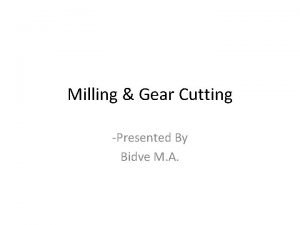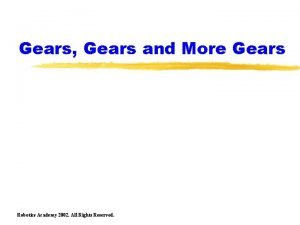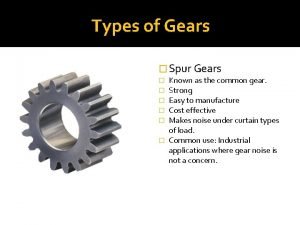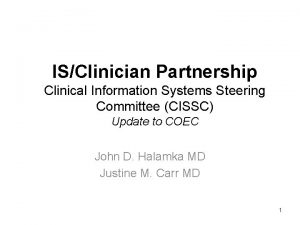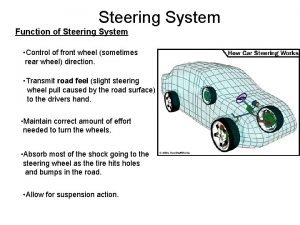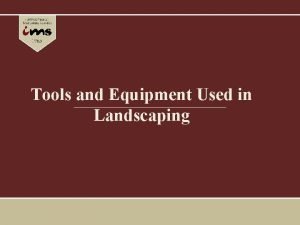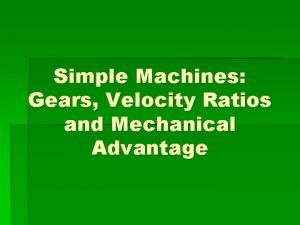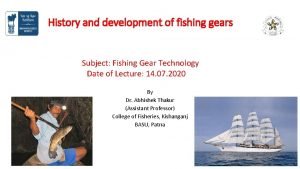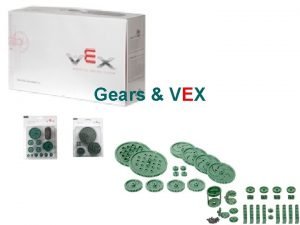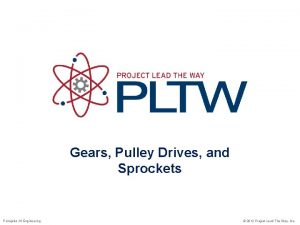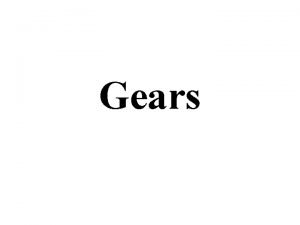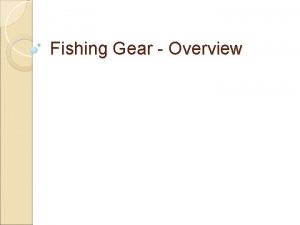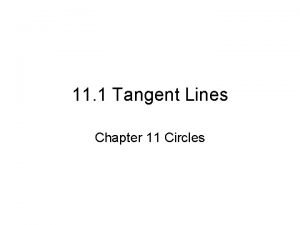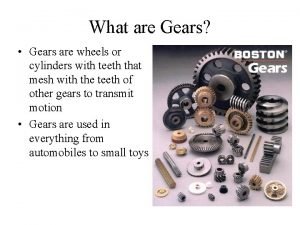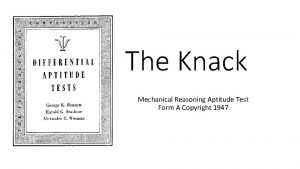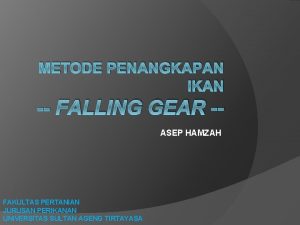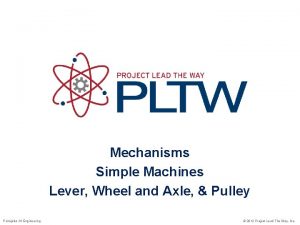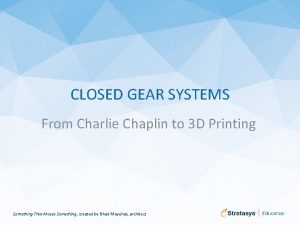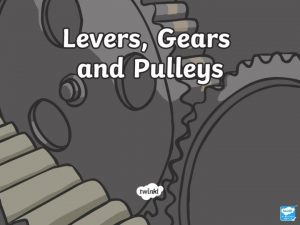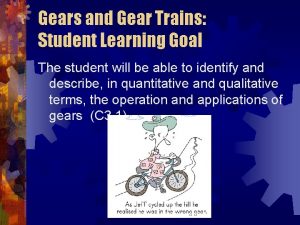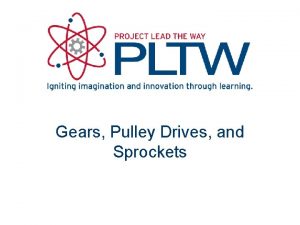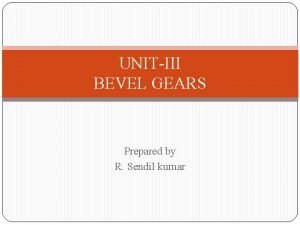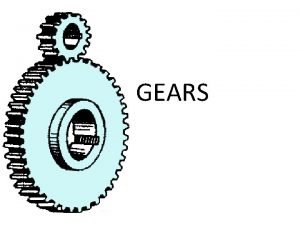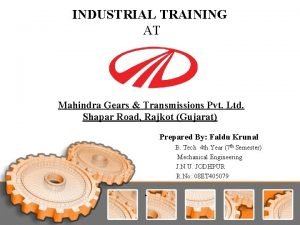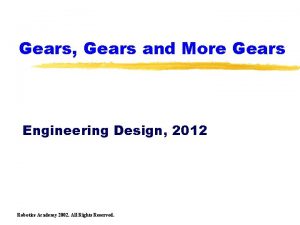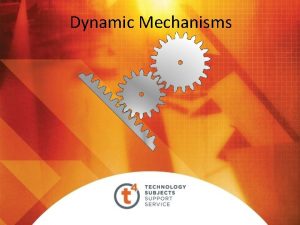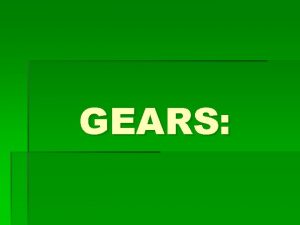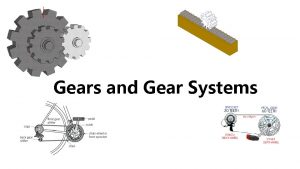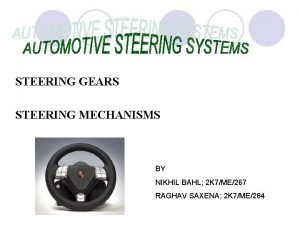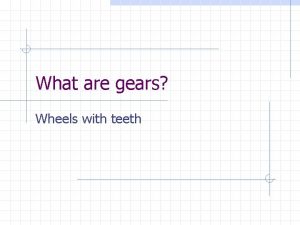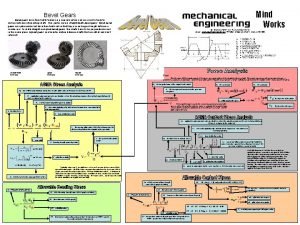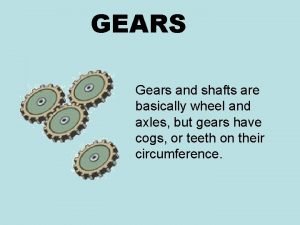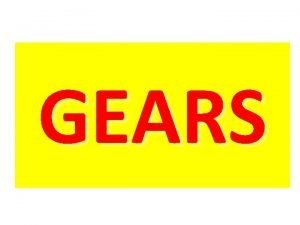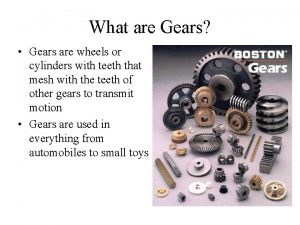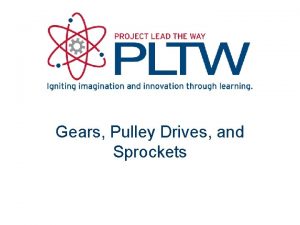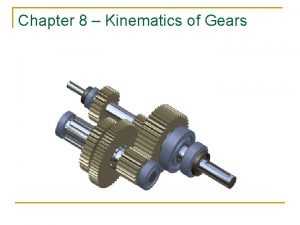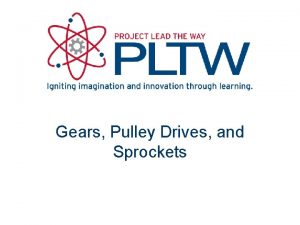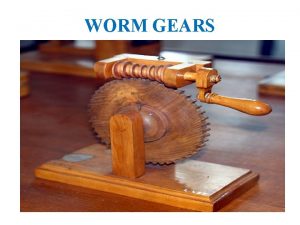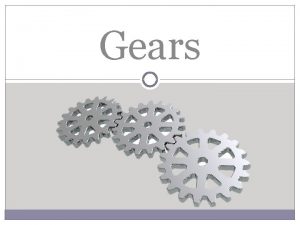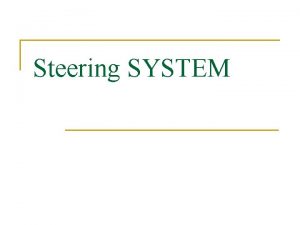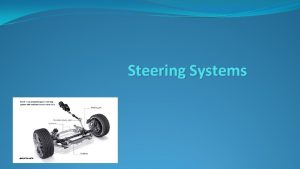Steering Systems 1 Steering Gears 2 types of


























- Slides: 26

Steering Systems 1

Steering Gears • 2 types of steering gears Ø steering box Ø rack & pinion 2

Recirculating Ball Steering Box • less precise steering “feel” Ø advantages Ø disadvantages • offers good mechanical advantage • bulky/heavy 3

Steering Box Linkage • parallelogram linkage Ø transmits steering box movement to the wheels 4

Rack & Pinion • • less mechanical advantage (compared to steering box) lighter – fewer parts compact more direct feedback & steering “feel” Ø advantages Ø disadvantages 5

Fun Fact… • early (1913) rack and pinion… 6

Rack & Pinion • tie rod ends transmit motion from the rack to the steering knuckle • they also allow for up & down movement thru bumps & pot holes & turns 7

Power Steering • power assist steering helps the driver turn the steering gear with reduced effort • on almost all cars, a belt driven hydraulic pump is used • this pump generates hydraulic oil pressure which is used to help move the steering gear 8

Power Steering – Rack & Pinion • hydraulic pressure is supplied by the engine driven oil pump • rotary spool valve directs hydraulic pressure to the rack piston based on driver input 9

Power Steering Box • worm nut doubles as the hydraulic piston 10

Steering System Service 11

Re/Re Power Steering Pump Pulley • use proper puller & installer Ø used when replacing or repairing the power steering pump 12

Steering Column • column u-joints connect steering column to steering gear • u-joints should be checked for looseness • they can also bind which leads to stiff steering 13

Power Steering Fluid Leaks • check the 2 lines that connect pump to steering gear Ø hose clamp = return (low pressure line) Ø threaded hose end = high pressure line • power steering pump Ø can be disassembled & resealed Ø or install a rebuilt pump $50 to $100 15

Power Steering Fluid Leaks § steering gear can be leaking • steering box can leak… Ø pitman shaft seal Ø cover seal Ø adjuster plug seal • steering rack can leak… Ø fluid lines Ø pinion seal Ø piston seals 16

Rack Bushings • rack bushings isolate the passenger compartment from road noise & vibration Ø check these 2 bushings for deterioration 17

“Rag Joint” • vehicles with steering boxes (and some rack & pinion units) use a “ rag joint” to isolate the steering wheel from road noise & vibration Ø these should be checked for deterioration 18

Checking Steering Linkage Wear • rack & pinion Ø check inner & outer tie rod ends Ø grab the front & back side of the tire Ø rock it back & forth Ø watch for slop in the tie rod ends 19

Checking Steering Linkage Wear § parallelogram steering linkage § move front tires in & out • check for looseness in… Ø pitman arm Ø idler arm Ø center link Ø inner & outer tie rod ends 20

Checking Steering Linkage Wear § alternately, you can check the linkage this way… • leave the vehicle on the ground (or drive-on hoist) • have an assistant move steering wheel back & forth thru the free play • look at the linkage for slop, wear & movement 21

Disconnecting Tie Rod Ends • leave the nut on, but loosened – this will protect the threads from the hammer • tap the knuckle with a ball peen hammer • a “pickle fork” can be used if the tie rod end is being replaced 22

Replacing Pitman Arms • once the nut holding the pitman arm to the pitman shaft is removed, a puller must be used to remove the arm from the steering box 23

Removing Steering Wheels • after retaining nut is removed a puller must be used 24

Steering Wheel Lock Plate Removal 25

Power Steering Fluid Changes? 26

Recent Advances • Electronic Power Steering 27
 Plain milling can be otherwise called as……….
Plain milling can be otherwise called as………. Type of gear
Type of gear Types of gear
Types of gear Cissc
Cissc Service power steering
Service power steering Equipment used for landscaping
Equipment used for landscaping It is the reciprocal of velocity ratio
It is the reciprocal of velocity ratio Evolution of fishing gears
Evolution of fishing gears Rack and pinion vex
Rack and pinion vex Gears and pulley
Gears and pulley Driver and driven gear
Driver and driven gear Difference between active and passive gears
Difference between active and passive gears Ml and mn are tangent to circle o. what is the value of x
Ml and mn are tangent to circle o. what is the value of x Whats a gear train
Whats a gear train Which shaft turns fastest
Which shaft turns fastest Falling gears
Falling gears Wheel and axle simple machine formula
Wheel and axle simple machine formula Charlie chaplin gears
Charlie chaplin gears Gears pulleys and levers
Gears pulleys and levers Ima of gears
Ima of gears Gears sprockets pulleys
Gears sprockets pulleys Abstracness
Abstracness To connect two intersecting shafts we use
To connect two intersecting shafts we use Classification of gears
Classification of gears Gear tooth profile diagram
Gear tooth profile diagram Vex mechanisms
Vex mechanisms Mahindra gears
Mahindra gears
